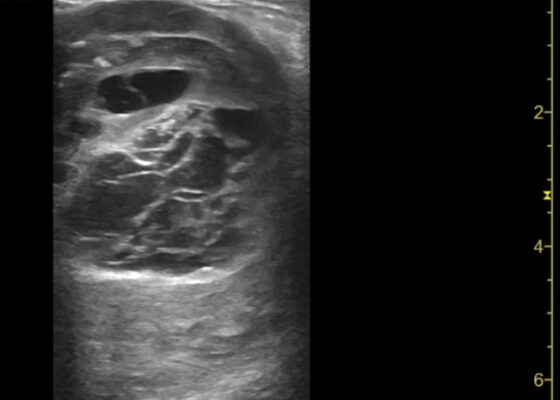Issue 7:4
Use of An Ophthalmology Tutorial to Improve Resident Comfort with the Emergency Eye Exam
DOI: https://doi.org/10.21980/J86H0MBy the end of this small group didactic, learners will be able to: 1) demonstrate ability to focus on the various components of the slit lamp exam 2) demonstrate understanding of a systematic approach to the eye exam 3) demonstrate appropriate use of the Diaton, iCare, and Tonopen tonometers.
A Novel Module Based Method of Teaching Electrocardiogram Interpretation for Emergency Medicine Residents
DOI: https://doi.org/10.21980/J8Z06JAfter completion of the module learners should be able to: 1) correctly recognize and identify ECG abnormalities including but not limited to abnormal or absent P waves, widened QRS intervals, ST elevations, abnormal QT intervals, and dysrhythmias that can lead to sudden cardiac death; and 2) synthesize findings into a succinct but accurate interpretation of the ECG findings.
A Model Curriculum for an Emergency Medicine Residency Rotation in Clinical Informatics
DOI: https://doi.org/10.21980/J82P9HThe aim of this curriculum is to teach informatics skills to emergency physicians to improve patient care and outcomes, utilize data, and develop projects to lead change.3 These goals will be achieved by providing a foundational informatics elective for EM residents that follows the delineation of practice for Clinical Informatics outlined by the American Medical Informatics Association (AMIA) and the American Board of Preventive Medicine (ABPM).
Respiratory Distress in the Pediatric ED: A Case-based Self-directed Learning Module
DOI: https://doi.org/10.21980/J8T64MEducational Objectives: By the end of this module, learners will be able to: 1) recognize the unique pathophysiology for respiratory distress in the pediatric population and formulate a broad differential; 2) understand the treatment principles for the most common causes of respiratory distress in children; 3) navigate and apply validated clinical decision-making tools for treatment of pediatric respiratory illnesses.
Methemoglobinemia
DOI: https://doi.org/10.21980/J8PH1BAt the end of this simulation case, participants should be able to: 1) recognize shortness of breath, cyanosis and respiratory distress, and the difference between all of them based on the clinical presentation 2) identify the underlying cause of the condition by conducting a thorough history and physical 3) know how to identify and treat methemoglobinemia by ordering necessary labs and interventions and understand the pathophysiology leading to methemoglobinemia 4) recognize patient’s response to treatment and continue to reassess.
Torsade de Pointes Due to Hypokalemia and Hypomagnesemia
DOI: https://doi.org/10.21980/J8JP8GBy the end of this simulation session, learners will be able to: 1) formulate appropriate work-up for altered mental status (AMS) 2) recognize hypokalemia and associated findings on ECG 3) address hypomagnesemia in a setting to hypokalemia 4) manage pulseless VT by following advanced cardiac life support (ACLS) 5) recognize and address TdP 6) provide care after return of spontaneous circulation (ROSC) 7) consult intensivist and admit to intensive care unit (ICU).
Mushroom for Improvement Case Report: The Importance of Involving Mycologists
DOI: https://doi.org/10.21980/J8ZW7WThe mushroom displayed here is large and lacks any gills. Small puffball mushrooms can resemble young immature button top Amanita type mushrooms. Opening the Amanita mushroom should reveal apparent gills and quickly differentiate the two- -the puffball mushroom should have a white interior without gills.
A Case Report of a Man with Burning Arm and Leg Weakness
DOI: https://doi.org/10.21980/J8V659A non-contrast computed tomography (CT) of the head and neck was performed, followed by an MRI of the cervical spine. The CT demonstrated congenital narrowing of the cervical spinal canal, with posterior disc osteophyte complex and disc bulge at C3-4 and C4-5 (arrow). The T2-weighted MRI additionally demonstrated obliteration of the anterior and posterior subarachnoid space at the level of C3-C5, with associated patchy central cord signal abnormality (arrow).
Thigh Mass Case Report
DOI: https://doi.org/10.21980/J8QD3CPoint-of-care ultrasound (POCUS) demonstrates a large, subcutaneous mass with areas of mixed echogenicity. The mass contains fluid-filled, anechoic areas with internal septations and absent doppler flow. The majority of the mass appears isoechoic to the surrounding tissues with a hyperechoic border. Computed tomography (CT) of his right thigh shows a 16 x 8.1 x 9.5 cm heterogenous, complex mass within his hamstring muscles, inferior to the femur. His lab work was significant for a white blood cell (WBC) of 17.3 (103/µL).
Inferior STEMI Electrocardiogram in a Young Postpartum Female with Sickle Cell Trait with Chest Pain – A Case Report
DOI: https://doi.org/10.21980/J8KP95ECG shows evidence of ST segment elevation in the inferolateral leads with reciprocal change in a bigeminy pattern. The ECG pattern seen in this patient demonstrates ST elevations in the inferior leads (II, III, and avF) as well as the precordial leads V4-V6. Reciprocal changes can also be seen in leads I and avL. Though this STEMI pattern is typically associated with occlusion of the right coronary artery in 80% of cases, it may also be caused by occlusion of the left circumflex artery. This may explain this patient’s cardiac catheterization findings of vasospasm in the left circumflex coronary artery.
1›
Page 1 of 2




